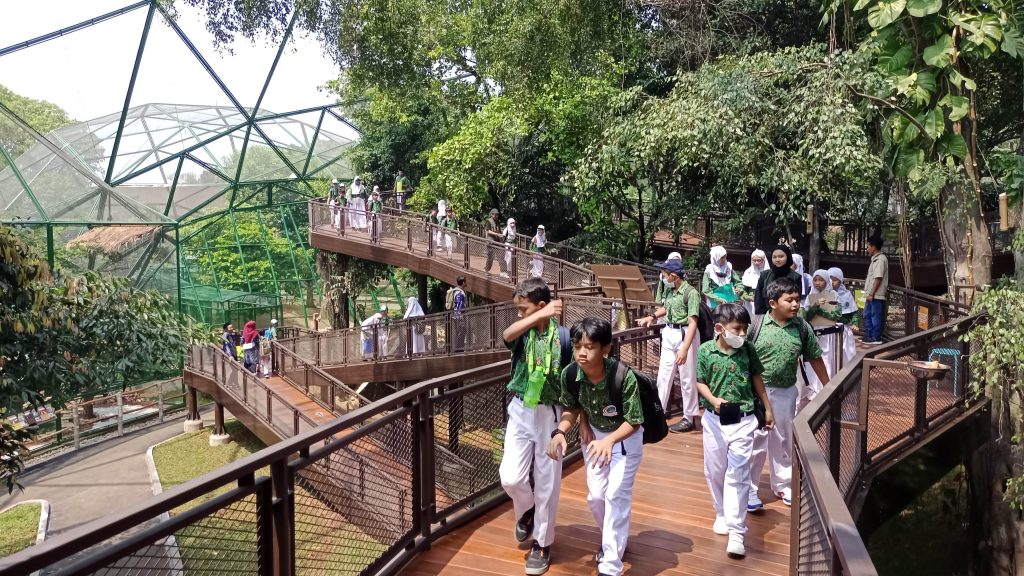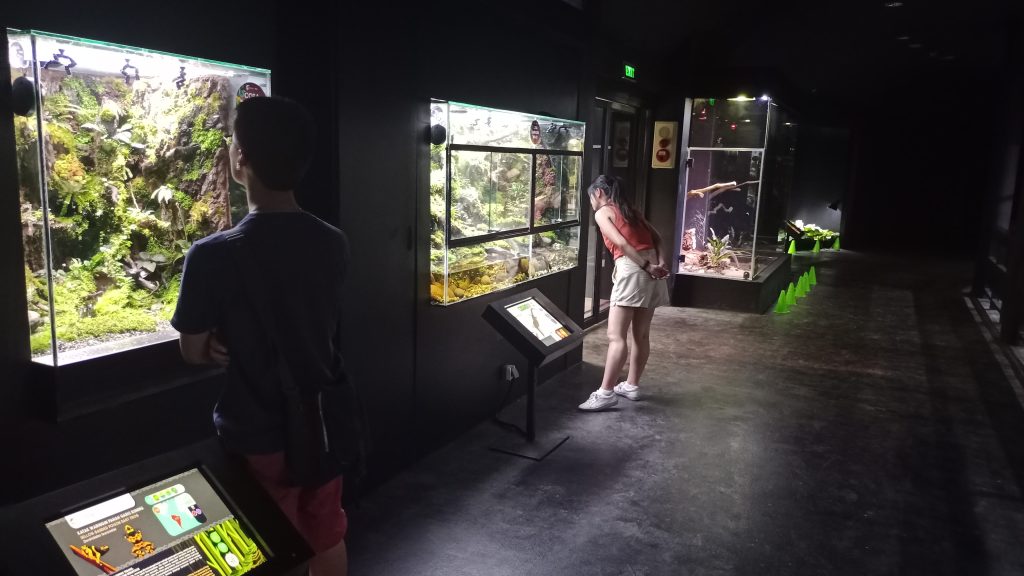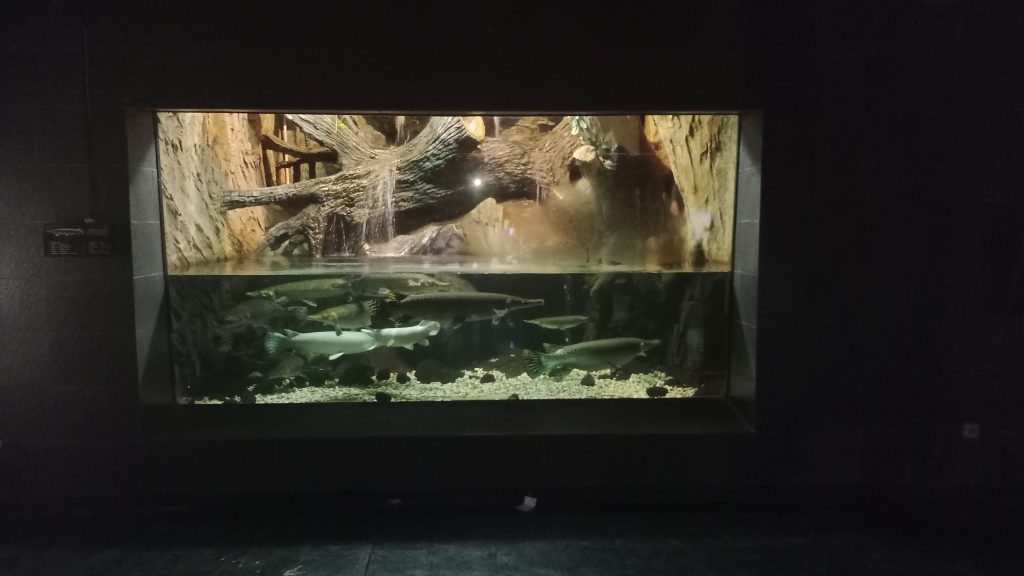
At Taman Mini Indonesia Indah, the Jagat Satwa Nusantara presents a unique opportunity to get up close and personal with some of the country’s most vibrant and exotic birds, reptiles, freshwater creatures and even insects. The recently revamped space welcomes adds to the attractions worth visiting in east Jakarta. / Photos courtesy of Jagat Satwa Nusantara.
Originally opened in 1975, for decades Taman Mini Indonesia Indah (TMII) was the go-to destination to discover and learn about the wonders of the archipelago, and more. Now operated under the state-owned tourism company, In Journey, the culture-based recreation park has been undergoing impressive improvements, bringing the culture-based recreation centre into this era almost half a century later.
Sprawling an vast 150 hectares, the park is home numerous attractions, from Museum Indonesia, showcasing artefacts of traditional heritage and history; a living cultural showcase of Indonesia’s 33 provinces, including local architecture and clothing; a Contemporary Art Gallery; and the most recently revamped, Jagat Satwa Nusantara, ‘Wildlife of the Archipelago’.

The wildlife attractions are managed by Dyandra Mitra Indah, an organisation actively engaged in scientific research to create effective measures to protect and renew Indonesia’s biodiversity animals. The diversity and richness of Indonesia rare and endemic animals is showcased through three revitalised attractions, split into four unique destinations: Bird Park defining the avifauna class, Komodo Museum and Reptile Park representing herpetofauna, and Freshwater World and Insects representing the pisces and insect class.
The Jagat Satwa Nusantara attractions have been designed to connect people of all ages with a selection of Indonesian animals, in hopes to educate, inspire and raise awareness on the country’s impressive biodiversity. Now, with its new modern facilities, each attraction has been able to recreate the original habitats of the featured wildlife, where visitors have are provided with ample information and guides to discover and learn.
BIRD PARK



This Bird Park is a home to 216 species of birds and around 2,000 birds including the iconic Elang Jawa (the Javan hawk-eagle), Merak Hijau (green peafowl), and Undan Kacamata (the Australian pelican). After being revitalised, this park mesmerises visitors with its eye-catching façade with the roof resembling a boat that reflects Indonesia’s maritime culture which is covered with Dolken’s artistic wooden touches.
When you enter this park, you’ll encounter a beautifully shaded, man-made river filled with white and black swans that are actively gliding along the river, a feast for the eyes. A monument stands displaying a map of Indonesia split in two, which represents how the aviary is organised: to the right, the exotic birds of East Indonesia, called the Wallacea & Haul zone; to the left is the Greater Sunda zone that presents the birds of western Indonesia.
The Wallacea & Haul zone presents the environment of a tropical rainforest. Passing through the entrance of this zone, you will find pirate birds and cockatoos that are deliberately presented for interaction with visitors, a great photo opp for visitors.

Amidst the lush green trees are two tree houses connected by a wooden bridge, named Mbaru Niang house, which shows the traditional customary house of the Wae Rebo tribe in Flores, East Nusa Tenggara.
Combining fun and entertainment, this zone also features the Maleo Amphitheater that overlooks the central area of the park as a venue to showcase the spectacular beauty and attractions of a variety of birds. To unwind, you can relax at the Bantimurung Cave, which is beautifully designed to resemble the original Bantimurung cave in South Sulawesi. Here you can experience a savour Indonesian specialities with views over the river. In addition, there is also a Raptor Free Flight Experience, where you can feel what its like for an eagle to land gracefully on your hand, swopping in from 60-metres away!
The Greater Sunda zone presents the birds of western Indonesia. The collection of birds here mostly features neutral colours, unlike the colourful Eastern Indonesian ones. However, here you can find peacocks that often spread their beautiful feathers to astonish visitors.

The highlight of this zone is the Oma Hada, a 30-metre-high skywalk that offers the chance to interact with exotic birds that love to perch in the trees. The architecture is inspired by the traditional houses of the Nias tribe in North Sumatra, which is considered one of the best vernacular architectures in Asia. The zone also features a Javan eagle enclosure that has been carefully designed to create a near-natural environment, where you can comfortably understand the behaviour and characteristics of Indonesia’s national bird.
The bird park provides information on species that are protected and those that are not, based on the Environmental and Forestry Ministry’s Regulation 2018 and also information about their diet, distribution status, and habitat. There’s also information on the birds’ conversation status, which is also known as the IUCN Red List, which is divided into five statuses: critically endangered, endangered, vulnerable, near-threatened, and least-concern.
KOMODO MUSEUM & REPTILE CENTRE

From the Bird Park, you can transfer to the Komodo Museum & Reptile by taking a tour vehicle provided by TMII. Covering an area of 6,000 m2, the Komodo Museum invites an extraordinary adventure through 5 amazing distinct zones: the Herpetofauna, Testudines, Crocodilia, Sauria, and Varanus.
This museum is an animal exhibit that unfolds like a record of magical animal journeys from Sumatra to Papua. The experience offered is interactive learning through visual infographics which presents information that enriches visitors’ understanding of the world of reptiles that are categorised into three groups, namely Crocodilia, Testudinata, and Squamata.
The highlight of the museum is it has the most comprehensive collection of Indonesian crocodiles, including Siamese, Muara, Senyulong, and Irian crocodiles, which are the main attraction. The museum even has a cafe, where visitors can enjoy tasty snacks and coffee with a view of the showcase.

It also features a captivating collection of live reptiles, where visitors can experience direct view of unique animals ranging from Komodo dragons (all dragons from breeding), pythons, snakes with legs, monitor lizards, iguanas, and turtles.
For an unforgettable moment, take your kids to explore their curiosity at Plaza Padar, where you can play with pythons under expert supervision. Every Saturday and Sunday at 2:30 pm to 3 pm, you can witness the rangers feed the Komodo dragons.
FRESHWATER WORLD & INSECTS

Complete your knowledge of Indonesia’s animal diversity by visiting the third attraction, the Freshwater World & Insects, located in the south of TMII. The attraction is divided into several zones, namely Pisces Mundi (fish), Hortus in Aqua (garden above the water), Tropicae Silvae (tropical rainforest), and Archipelago.
When you enter you will immediately be greeted with a number of giant fish, such as red tail catfish, freshwater stingray, freshwater pomfret, freshwater shark (patin genghis khan), and also arapaima, the world’s biggest freshwater fish (a type of predatory fish). You’ll find yourself deep inside the aquarium designed to give the sensation that you are in the middle of a river.
Some special collections include arowana (Scleropages formosus), sawfish (Pristis microdon), tapah (Wallago leerii), and puffer fish.

The aquarium is equipped with a museum, library, auditorium, and quarantine room built at the back for breeding collections and accommodating the results of farmers that can be traded to visitors, the general public, fish collectors, and exporters. This place also opens opportunities for students and the general public to conduct research and observations related to the development of science and ornamental fish (aquarium fish) business opportunities.
The world of insects can be found in the location adjacent to the freshwater aquarium. Many rare insects are displayed here, ranging from the smallest to the largest, such as rhinoceros beetles, crickets, flies, mosquitoes, bees, and dragonflies. You can also visit the beautiful Butterfly Garden.
Located in East Jakarta, TMII can be reached by taking the light rail transit (LRT) and taking a free shuttle provided by TMII at the TMII LRT Station. However, buying an online ticket beforehand would be advisable.
For more information:
jagatsatwanusantara.id
@jagatsatwa.tmii
tamanmini.com






